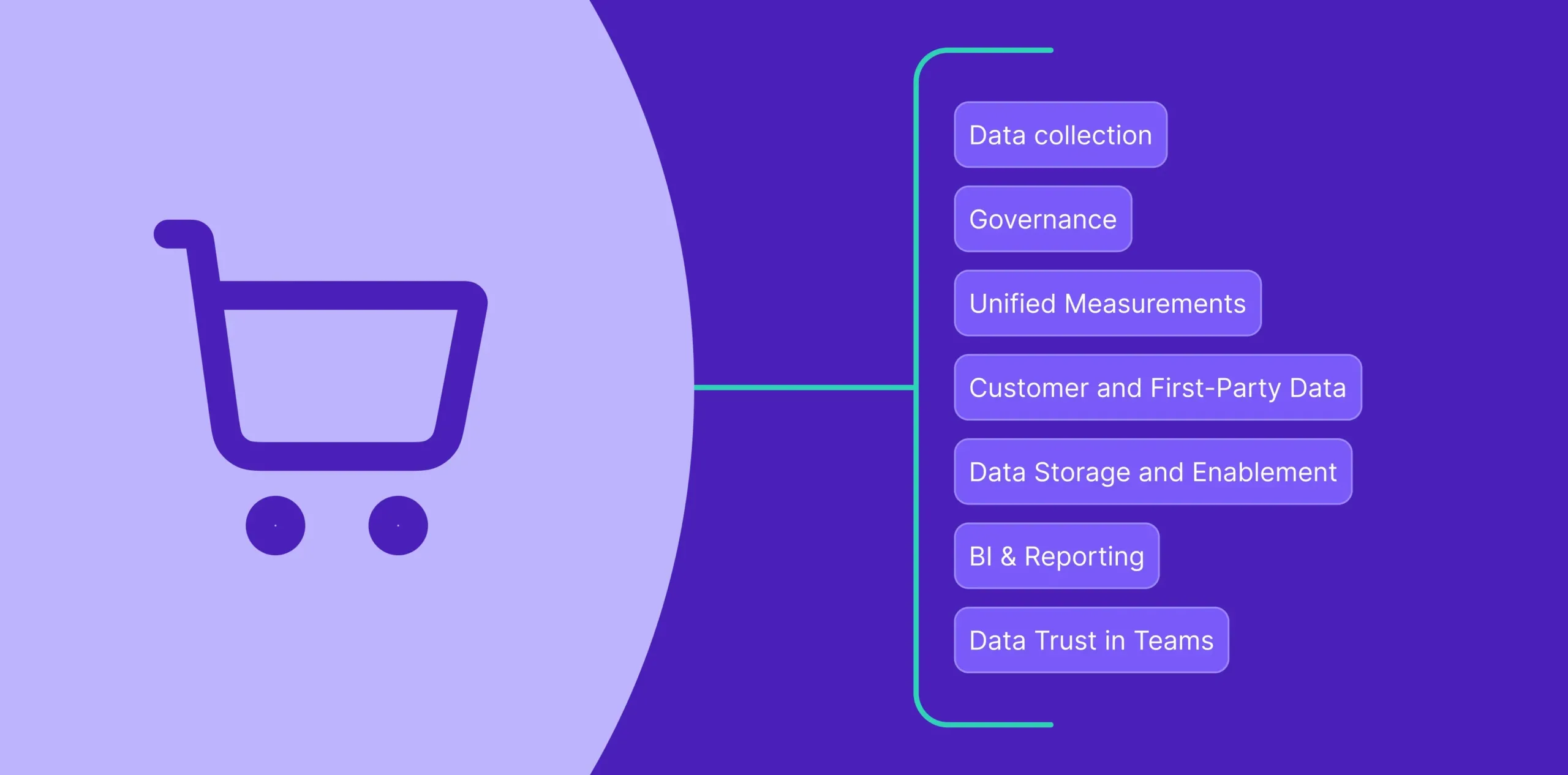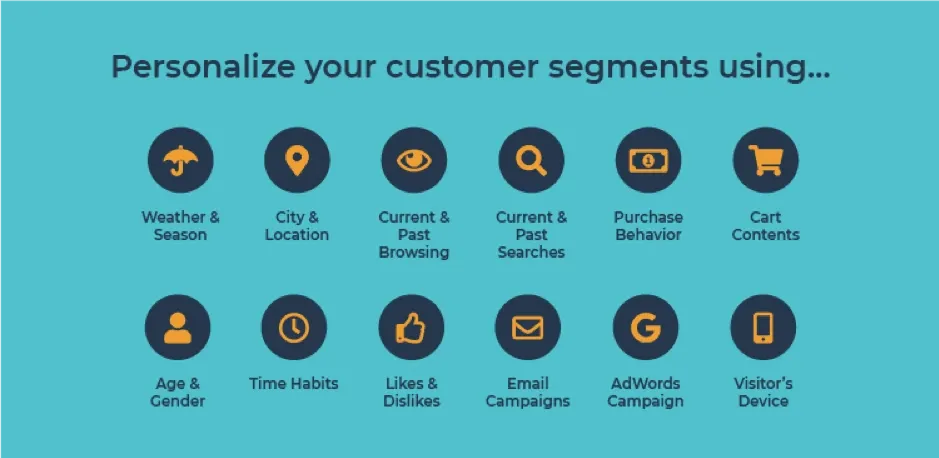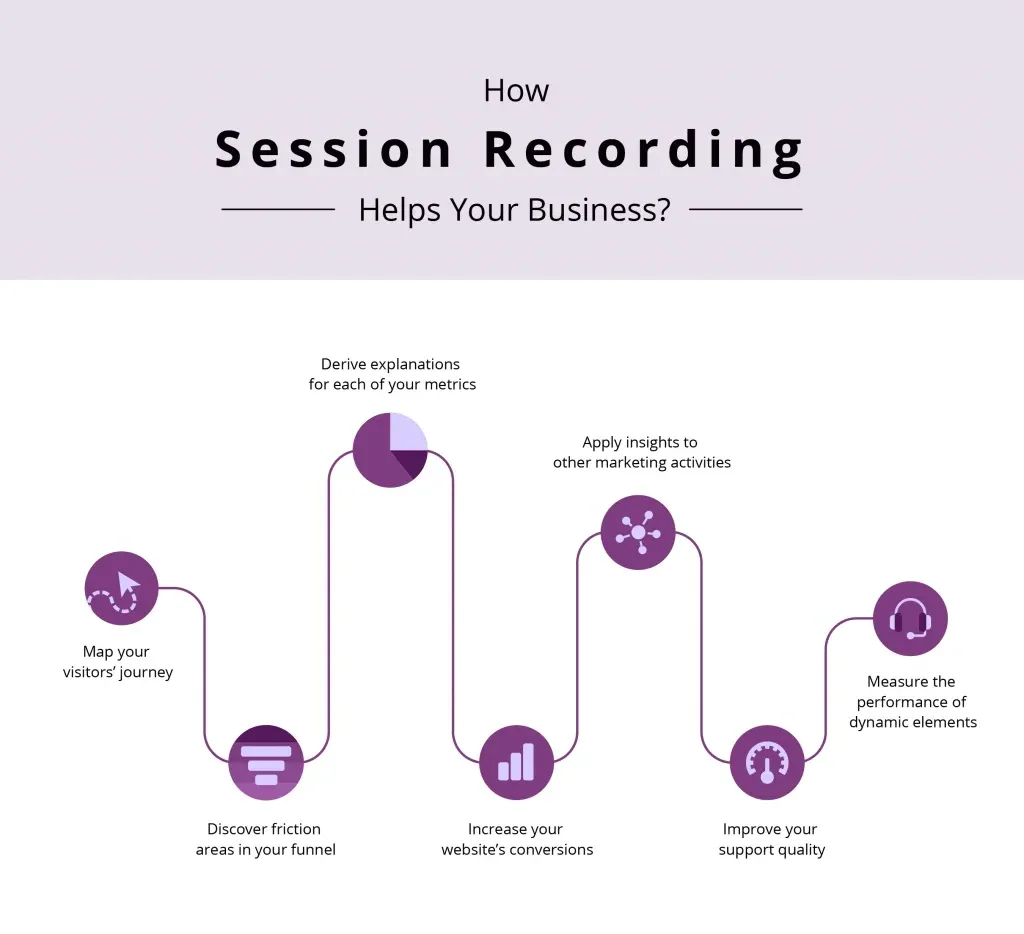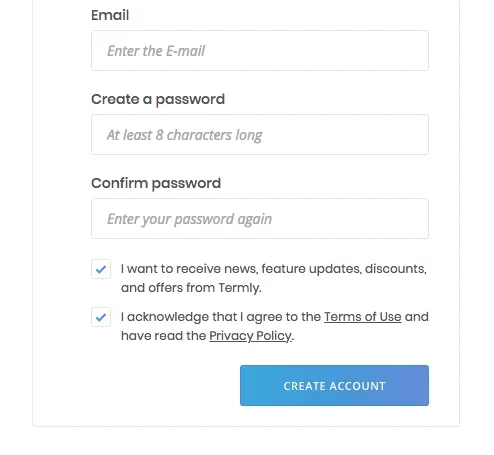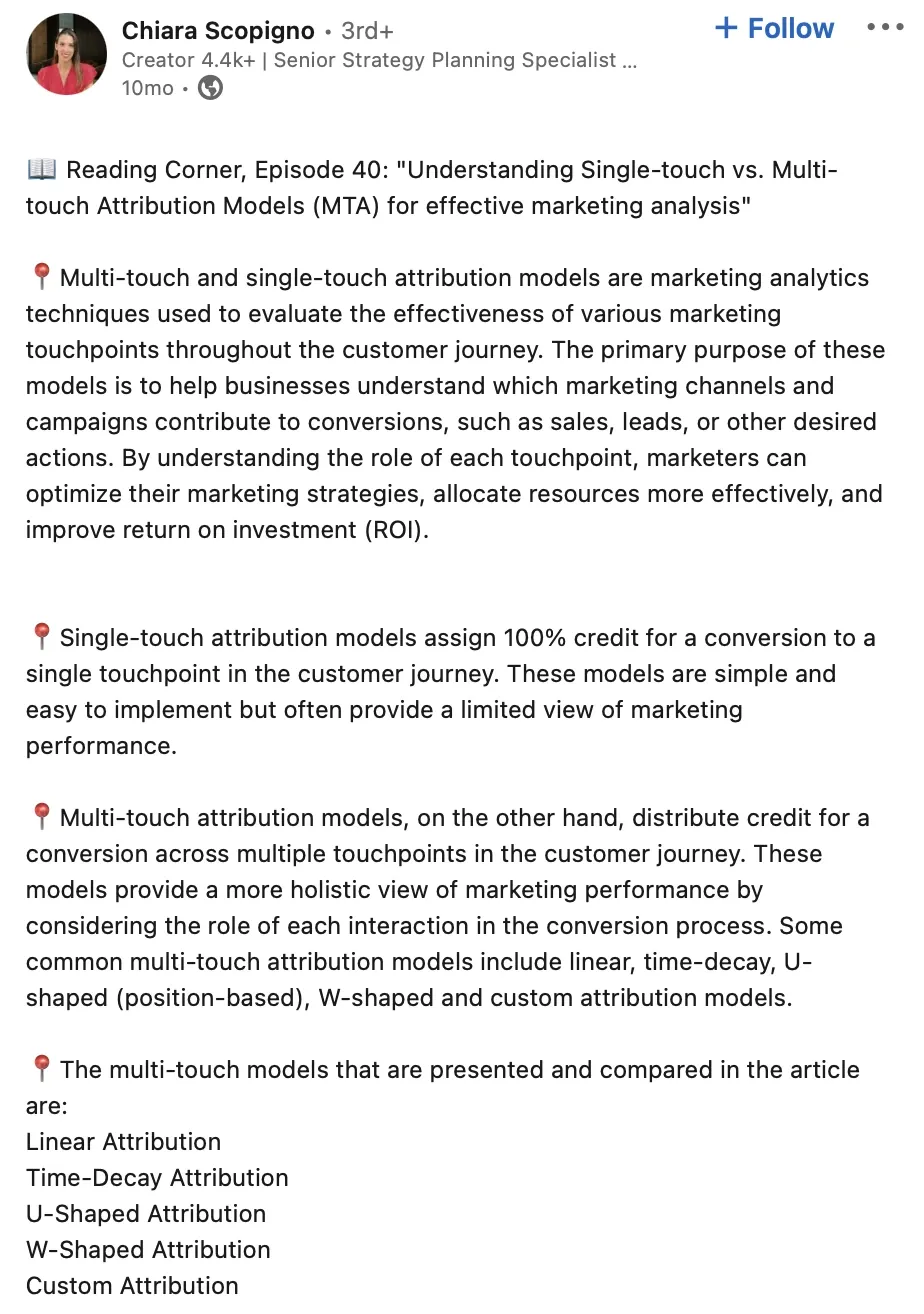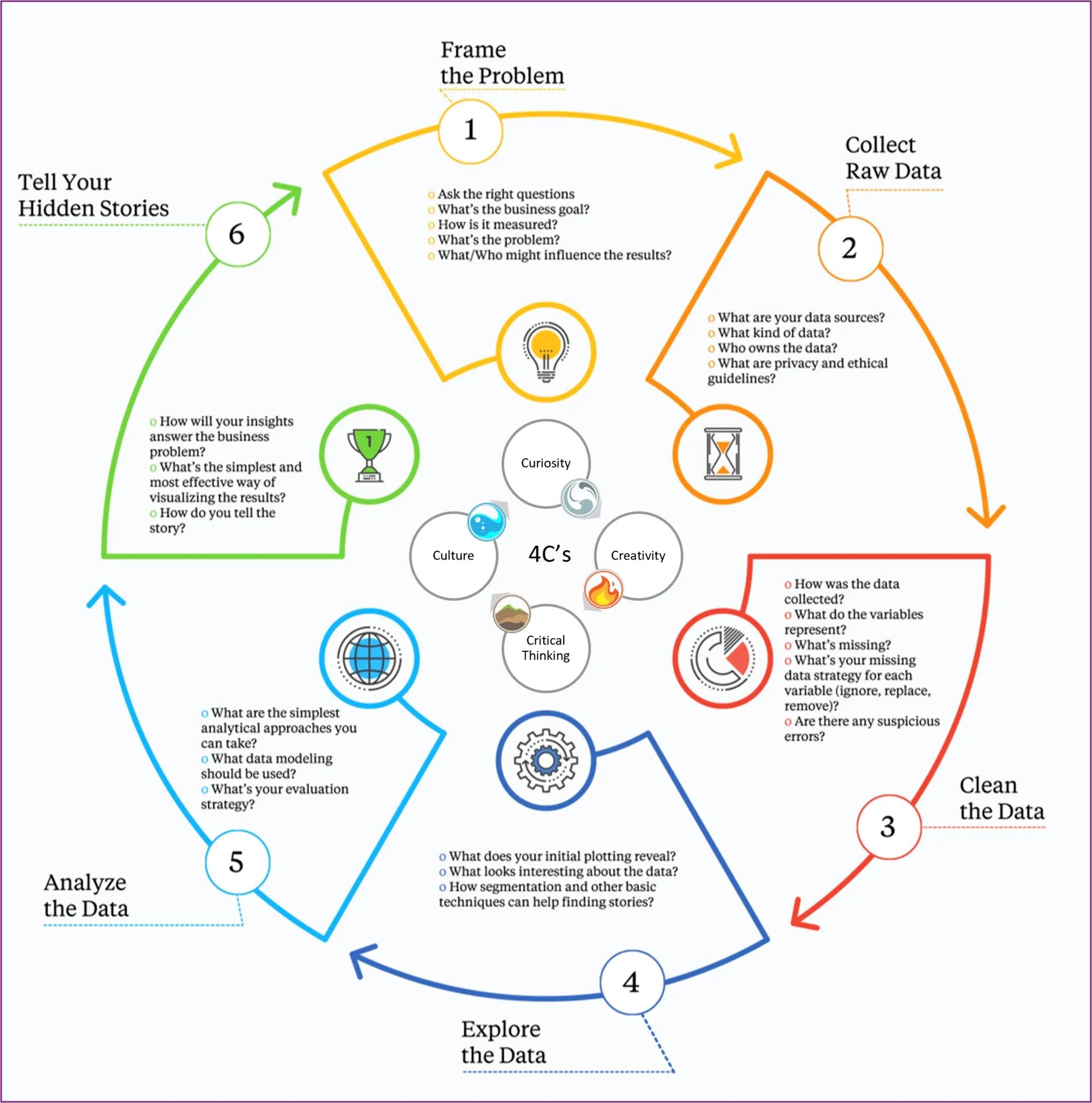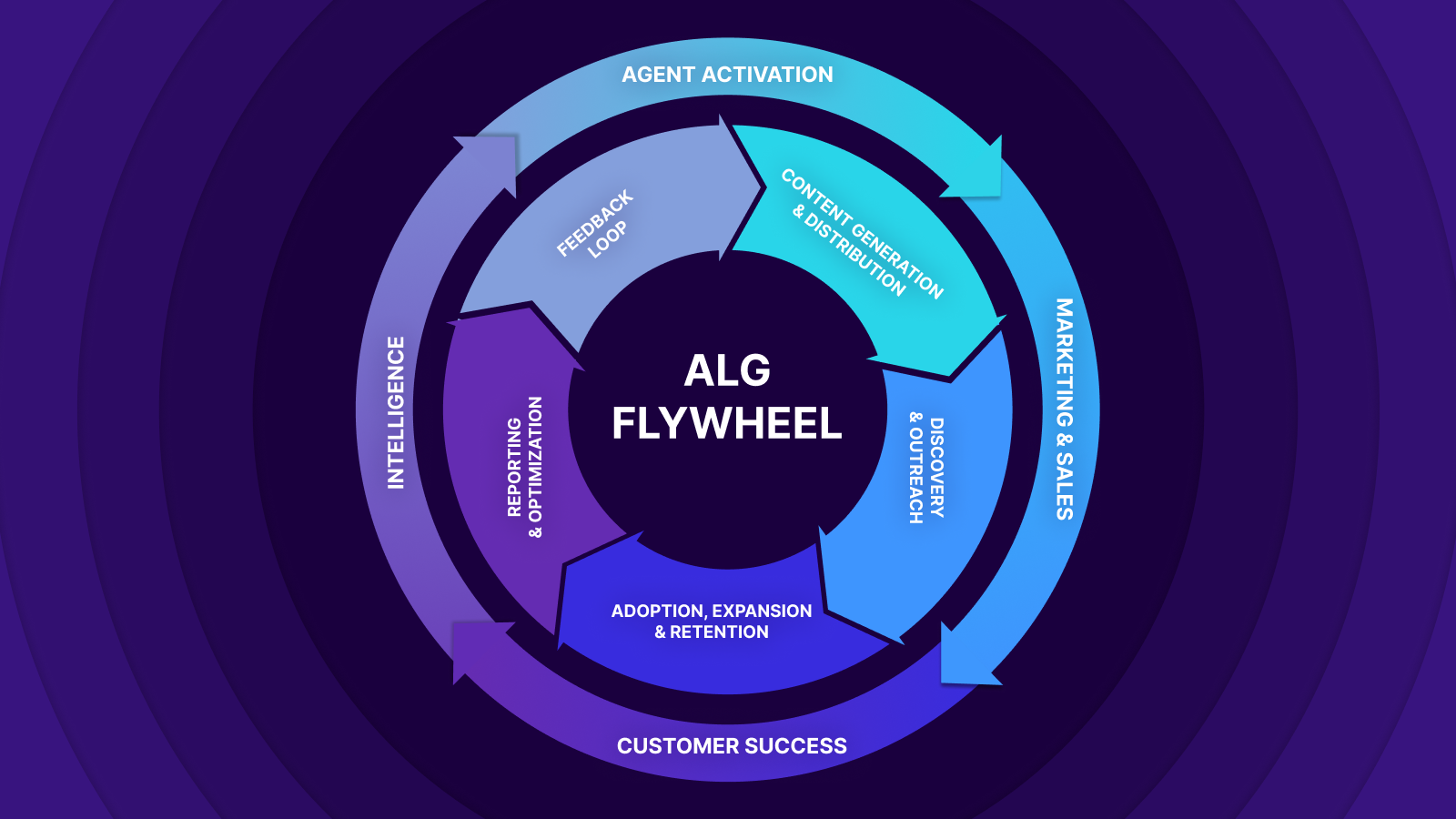A data strategy is a long-term plan that defines the technology, processes, and people required to manage an organization’s information assets. All types of businesses, including eCommerce retailers, collect large volumes of data.
However, without a well-thought-out approach to collecting, storing, and analyzing that data, improving decision-making, fostering innovation, and staying ahead of competition is difficult.
A McKinsey report states that businesses that effectively use data and analytics have the potential to increase their profitability by as much as 60%. Besides, those who quickly adapt themselves to capture data’s potential are likely to achieve large-scale benefits.
Here, we discuss what is a data-driven eCommerce strategy and how eCommerce businesses apply a data-driven strategy that delivers results.
What is a data-driven eCommerce strategy?
A data-driven eCommerce strategy involves collecting eCommerce data about every customer when they visit your website. This data helps fine-tune your operations and provides a basis to understand the behavior of your customers.
Through their actions on your digital platform/website you can access valuable information such as the products they prefer, the banners they click, and how they arrived on your site.
Equipped with this data, you can build your eCommerce marketing strategy based on real-time accurate information and adapt your digital marketing strategies by customizing offers and even customer journeys if required.
7 Steps to Developing your eCommerce Data Strategy
1) Data collection
A wide variety of qualitative and quantitative data can be collected from every customer your eCommerce business interacts with. For instance, many global online marketplaces scrape Amazon to gather competitive data, such as pricing, customer reviews, and best-selling product categories, which can then be used to refine their own strategies.The key is to know what data will be helpful to you and which won’t be.
Qualitative data, for instance, is descriptive and comes from customer reviews and free-form surveys.
On the other hand, quantitative data is largely numeric and, therefore, more easily measurable – for example, bounce and customer retention rates.
Some of the commonly collected types of eCommerce data include:
- Website sessions
- Previous purchases
- Customer segmentation
- Customer demographics
- Cart abandonment rates
Personalize-your-customer-segments-using-this-below
What information to collect and store as a part of your data strategy largely depends on the products sold on your eCommerce store.
For example, if you’re a multi-country clothing e-retailer like Boohoo or ASOS, you will find the data about payment preferences, cultural sensitivity in browsing behavior, and customer demographics particularly helpful.
Mismatched or incomplete data can result in faulty insights, affecting decision-making and overall customer experience.
That’s why it’s critical to collect data properly. Here’s how:
Establish a clean and accurate data layer
This is a virtual layer between your website (code and server) and your tag management solution (Google Tag Manager).
It involves mapping out all customer touchpoints, such as online advertising, engagement on product pages, interactions during payment, and so on, ensuring data is captured correctly at each point and stored in a standardized format.
Implement server-side tracking
This shifts the load of data collection from the client side (like a web browser) to a server. Server-side tracking enhances data accuracy, reduces dependency on browser-side elements, and improves privacy compliance. It allows you to manage better what data is shared with third-party vendors.
Track critical conversion points
Understanding where and why conversions happen (or don’t happen) is essential for sales optimization in eCommerce.
Therefore, track various metrics, such as product page views, shopping cart abandonment rate, average order value (AOV), traffic sources, customer lifetime value (CLTV), and return on ad spend (ROAS), which are vital in the customer journey. Use heat maps and session recordings to gain insights into user behavior.
How-session-recording-help-your-business
2) Governance
Data governance allows your business to manage and utilize data effectively. It starts by identifying and classifying available data, followed by managing the usability, integrity and security of data in enterprise systems, and is guided by automated data governance tools.
Once the data is organized and policies created to manage its usage, governance experts create internal data standards to control data usage.
In an eCommerce data strategy, this concept takes on added significance. Inconsistent data governance can result in data silos, misinterpretation of data, and compliance issues, especially in handling user consent when operating the eCommerce business in different countries.
To avoid this situation:
Set up standardized naming conversions
Without that, data from various sources, such as web analytics, online transactions, emails, and more, may not align and give you a complete picture, affecting analytics and strategic decisions.
Establish uniform naming conventions for all metrics, UTMs (Urchin Tracking Modules), and campaign names across your eCommerce business. Here are a few examples:
- Sales metrics: Use prefixes like “Sales_” followed by the specific metric, e.g., “Sales_TotalRevenue,” “Sales_AverageOrderValue.”
- Campaign name (utm_campaign): Structure as “Year_Month_CampaignName,” e.g., “2024_Dec_WinterSale.”
- External campaigns: “ProductName_PromotionType_Region_Year,” e.g., “Blouses_Discount_NA_2024.”
Create a comprehensive governance guidelines and policies document to record the conventions and educate all teams appropriately.
Ensure data accuracy relative to source systems
Regularly synchronize data from source systems like Order Management Systems (OMS) and Enterprise Resource Planning (ERP) systems.
The OMS centralizes and manages order-related information from diverse sales channels, providing real-time data on orders, inventory levels, and customer interactions.
On the other hand, the ERP system supports automation and processes in manufacturing, finance, human resources, supply chain information, procurement, and more. Such systems help secure, cleanse, filter, and visualize your data to extract insights.
Centralize user opt-in management
Opt-in is an affirmative action the user takes to indicate that they agree to have their data processed by you to contact them via email or phone.
Different countries have different data privacy laws. For instance, the UK and Europe practice the General Data Protection Regulation (GDPR). California has the California Privacy Rights Act (CPRA). Canada follows the Consumer Privacy Protection Act (CPPA). Singapore implements the Personal Data Protection Act (PDPA).
Depending on the geographical scope of your eCommerce business, observe the rules of consent in your legal jurisdiction. Avoid the risk of facing significant penalties by including the following in your eCommerce data strategy:
- Developing an interface allowing users to give, withdraw, or modify their consent easily
Centralize-user-opt-in-management
- Offering options to consent to different types of data processing activities separately—for instance, separate consents for marketing emails, and data sharing with third parties
- Building a system that securely stores consent records, including what users have consented to, when, and how the consent was obtained
- Ensuring the consent database is integrated with other tools used in the business (.e.g., CRM, email marketing tools, web analytics) so that user preferences are respected across all platforms
3) Unified Measurements
In eCommerce, a common challenge is the siloed approach to measurement and attribution across different channels. That’s where implementing a unified marketing measurement framework helps. Here’s how:
Adopt multi-touch attribution modeling
Multi-touch attribution offers insight into how various marketing channels contribute to the customer journey, ultimately resulting in a sale.
For example, a customer might see an Instagram ad for a product, then search it on Google, click on a paid search ad, and finally purchase after receiving an email with a discount code.
There are several multi-touch attribution modeling techniques – linear, time decay, and position-based models. Senior strategy planning specialist Chiara Scopigno explains the core concept in detail:
Chiara-Scopigno-post-on-single-touch-vs-multi-touch-attribution-through-linkedin
Before choosing a model, consider factors such as the sales cycle length, the complexity of your products or services, and all the channels you use to reach your customers.
Focus on incrementality-led measurement
Incrementality testing is the statistical approach to evaluating the impact of a marketing activity or campaign. It indicates whether introducing a new campaign had a positive, negative, or null effect and by how much, using a test group and a control group.
There are three types of incremental testing:
- Holdouts involve setting aside a control group not exposed to the marketing campaigns.
- Matched Market Testing (MMT) is useful for digital campaigns where you can easily segment audiences under key characteristics like size, demographic profile, and past sales trends.
- Marketing Mix Modeling (MMM) considers historical data and various external factors, such as competitor actions or economic conditions. For example, if you’re measuring the performance of your email campaign, it’ll focus on metrics like unsubscribe rate, CTR, open rate, and more.
Data scientist Md Adnan Dodmani shares key steps involved in MMM:
Post-on-mastering-market-mix-modeling-and-its-insights-with-ai
For instance, if your eCommerce business decides to launch a new product line in Canada and invest in Instagram ads, incremental testing can help determine if the campaign delivered the desired outcome by comparing KPIs, such as sales or customer engagement, between a group exposed to the ads and a control group.
Using Lifesight’s unified measurement model, you can conduct automated incremental lift tests and find the validation you need to make adjustments to your marketing efforts, execute audience split tests, and run geo-experiments.
Build actionable scenarios based on your budget or KPIs, optimize on a channel level or for your entire funnel, and derive the true value of your marketing campaign.
4) Customer and First-Party Data
First-party data is the wealth of information that businesses get directly from customer interactions. In the context of eCommerce, this could include website visits, product page views, social media interactions, completed purchases, customer feedback, and more.
First-party data is accurate and up-to-date, giving real-time insights into how customers act and what they like. However, integrating and managing customers across various touchpoints and systems can be tedious, which is why you must:
Create a single customer record across systems
A 360–degree customer view provides eCommerce businesses with a range of insights and potential marketing campaign ideas. To enable so, gather data from these common data collection methods:
- Online channels (e.g., website interactions, social media, email campaigns)
- Offline channels (e.g., in-store purchases, event attendees, direct mail responses)
- Loyalty programs (e.g., rewards redeemed, purchase history, member preferences)
- Customer service interactions (e.g., support tickets, call center logs, feedback surveys)
This data can answer many important questions for you:
- Which stage of the buyer’s journey are they at?
- What are the customers’ preferences and interests?
- What products have they purchased, shown interest in, or abandoned?
Develop comprehensive profiles incorporating all collected data points. Update profiles dynamically with new interactions and transactions.
Customer data secure and governed
As you directly collect the data from customers with their consent, it’s important to consider data privacy regulations like GDPR or CCPA – as discussed in #2.
A plan for managing user privacy choices is the bedrock of a solid first-party data strategy. Build a clear data governance policy defining customer data collection, storage, and use.
Conduct regular workshops to keep your teams up-to-date about the data governance policies.
Focus on identity (ID) resolution
To ensure accurate mapping of customer identities, employ specific ID resolution strategies, such as:
- Customer Data Platform (CDP): A CDP is a comprehensive software system aggregating and organizing customer data across various touchpoints. It creates a persistent, unified customer database accessible to other systems.
- CDP-lite: It refers to a scaled-down or simplified version of a full-fledged CDP. It offers core functionalities of a CDP, such as data integration and customer profile creation, but with fewer features or less complexity.
- Identity graph solution: This database creates a unified identity for each customer by connecting all known identifiers that correlate to them across various channels and devices. It helps understand the customer journey by linking all interactions (such as device IDs, email addresses, and social media profiles) to a single profile.
Utilize customer-level metrics to drive business
Measure and analyze standard metrics like:
- Customer Satisfaction (CSAT) tracks how satisfied customers are with your products
- Customer Effort Score (CES) measures how much effort a customer has to exert to get an issue resolved, a request filled, or a product returned or exchanged
- Net Promoter Score (NPS) measures the loyalty of a company’s customer base with a score from -100 to +100
- Customer churn indicates when a customer chooses to stop using your products
Categorize this data based on different customer groups, geographical areas, or product lines to identify specific areas of strengths and weaknesses.
Ensure the numbers are shared with relevant departments (like merchants and operations teams) to inform product development, customer service improvements, and operational decisions.
5) Data Storage and Enablement
As your eCommerce business receives increasing amounts of data from various sources, managing it all can be overwhelming. To solve this problem, it’s recommended to centralize data storage.
Google BigQuery, Amazon Redshift, and Snowflake are among the top cloud data warehouses ideal for this purpose. The chosen storage solution should also be able to integrate data from different sources and scale up its storage capacity as the volume of data grows.
However, your data is only as good as how it’s maintained. You must set up data validation and cleansing routines to boost quality as a part of your eCommerce data strategy.
One way to do so is by building data pipelines, an automated process of actions or jobs used for extracting and manipulating data from various sources into a format you can use to analyze and gather insights.
For example, thanks to data pipelines, you can combine and analyze data from your eCommerce retail sales with your email and Facebook marketing, even if they aren’t in the same format.
Lastly, maintain up-to-date data dictionaries and schemas that define and structure all data elements and their sources. Make this accessible to relevant teams to facilitate understanding and use of data.
6) Data Business Intelligence (BI) and Reporting
Overloaded with reports and facing performance bottlenecks, many businesses often struggle to derive timely insights from their data. Ecommerce companies are no exception.
Without a process, gleaning insights from data can be a Herculean task. But you can change that by taking the following steps:
- Set up Business Intelligence data analysis tools and systems to deliver data reports regularly (daily, weekly, or quarterly) and in real-time where necessary. Use Power BI, Tableau, or Looker to create dashboards that automatically update data in real time.
- Tailor reports and dashboards to meet the specific needs of various teams as a one-size-fits-all approach to data reporting is often unhelpful and inefficient. For example:
Reports for ‘executives’ should focus on overall sales, market growth, and ROI and highlight trends and areas requiring attention.
Departmental reports should be granular, focusing on metrics relevant to each ‘department.’ For marketing teams, for instance, the reports should shine a light on campaign performance, customer engagement, and conversions.
On the other hand, the reports for operations or supply chain management teams should discuss KPIs in data warehouses and data pipelines, such as latency and error rates.
Analysts require the most detailed and technical data reports containing customer behavior data, sales forecasts, and logistics efficiencies.
- Conduct regular audits of existing reports and dashboards to identify and eliminate those that are no longer useful. Encourage a culture where teams request data-driven insights only when necessary, reducing clutter and focusing on actionable intelligence.
7) Data Trust in Teams
Data trust means having confidence that your business data is healthy and ready to act on. Lack of understanding, confidence, or engagement with the data across teams can hinder its effective use in improving operations, designing exceptional customer experiences, and ensuring compliance.
To build trust in your data strategy, deploy rigorous quality checks and validation processes at multiple stages, such as during product listing, order processing, and pre-shipping.
Be transparent with your teams about the data sources, how it’s being processed, and its limitations. Create resources like FAQs or guides that explain vital data concepts and metrics in simple terms.
improve-data-literacy-among-all-employees
Conduct regular training sessions and workshops to improve data literacy among all employees. They should be comfortable raising concerns or questions about data.
In conclusion: Revolutionize your eCommerce Business’ Data Strategy
As we move forward, eCommerce is continuously reshaping how data is gathered and interpreted and how online retailers interact with customers and make strategic decisions.
Lifesight’s expertise in data analytics and its application in eCommerce makes it an ideal partner for businesses looking to navigate the complexities of modern data usage.
Lifesight’s holistic measurement suite with Incrementality Testing and Marketing Mix Modelling tools provide actionable insights into how your marketing initiatives drive sales and help understand the effectiveness of various marketing channels and tactics.
Sign up for a personalized demo to discover the benefits yourself and seamlessly transform your eCommerce data strategy.
You may also like
Essential resources for your success
